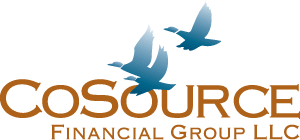SECURE Act 2.0 Recommended Provisions
In late December 2022, Congress passed the Consolidated Appropriations Bill (2023) that included provisions of a retirement bill now known as SECURE Act 2.0. The focus of the bill is retirement-based accounts such as IRAs, Roth IRAs and employer sponsored retirement plans including 401(k)s, 403(b)s, SEP and SIMPLE IRAs. Compared to the first SECURE Act passed in December 2019, which had roughly a dozen provisions around these accounts, SECURE Act 2.0 has dozens of new provisions[1].
In this three-part series, we’ll break down which provisions are mandatory and of the optional provisions, which ones we recommend to our clients.
The following are the “optional” provisions that we recommend:
Credit for Small Employer Startup Costs
Effective for taxable years beginning after December 31, 2022
- Start-up credit – lncreases the start-up credit for employers with between 1 and 50 employees from 50% to 100% up to $5,000. Note: The increase does not apply to plans of employers with between 51 and 100 employees and that credit remains at 50%.
- Employer Contribution Credit – An additional credit is provided for employer contributions (except in the case of defined benefit plans) equal to 100% in the year in which the plan is established. This credit excludes contributions made for employees earning $100,000 or more in wages.
- Credit for employers with 50 or fewer employees – The amount of the additional credit generally will be a percentage of the amount contributed by the employer on behalf of employees, up to a per-employee cap of $1,000.
- Credit Phase-in for employers with between 51 and 100 employees – The credit is reduced by an amount equal to the product of (i) the amount otherwise so determined under paragraph (2), multiplied by (ii) a percentage equal to 2 percentage points for each employee of the employer for the preceding taxable year in excess of 50 employees.
*The start-up tax credit is available to employers starting a new plan by joining a MEP or PEP. The credit will be available for the first three years an employer starts a plan under a MEP or PEP regardless of how long the MEP or PEP has been in existence.
Qualified Birth and Adoption Distributions (QBAD)
Effective date: Retroactive effective date – QBADs made after December 31, 2019
A participant who has taken a QBAD may repay that distribution to an eligible retirement plan accepting rollovers during the three-year period beginning on the day after the date on which the QBAD was received.
Eliminating Unnecessary Plan Requirements for Unenrolled Participants
Effective date: Plan years after December 31, 2022
Provided a participant has received a summary plan description and documents related to eligibility, a defined contribution plan is not required to provide disclosures or notices to employees who are eligible but have not enrolled in the plan, other than an annual reminder notice of eligibility and applicable deadlines, as well as any required documents upon a participant’s request.
Treatment of Employer Contributions as Roth
Effective date: Contributions made after December 29, 2022
An employer may designate matching contributions or nonelective contributions as Roth contributions, provided that the participant is fully vested in such Roth employer contributions.
*As drafted, SECURE 2.0 created pending questions regarding the Employer FICA obligations for such contributions.
Qualified Disaster Distributions and Loans
Effective date: Retroactive application to disasters occurring on or after January 26, 2021
Permits participants who meet certain criteria to take a distribution up to $22,000 (aggregated across all of a participant’s plan accounts, including IRAs) due to a federal disaster declaration. Distributions are not subject to the IRS 10% premature distribution penalty tax and can be amortized as income over a three-year period. Amounts distributed prior to the disaster to purchase a home can be recontributed. The employer is responsible for monitoring the $22,000 limit for each of the plans within its controlled group.
Increases the loan limit due to a federal disaster declaration from $50,000 to $100,000 and delays the repayment for up to a year.
Increase in Small Balance Mandatory Distribution Threshold
Effective date: Distributions after December 31, 2023
The dollar amount which a plan may authorize a distribution of a terminated participant’s vested account without the participant’s consent increases from $5,000 to $7,000.
Penalty-free Withdrawal for Domestic Abuse Cases
Effective date: Distributions made after December 31, 2023
Permits participants who self-certify they experienced domestic abuse to obtain a withdrawal (the lesser of $10,000, indexed for inflation, or 50% of the participant’s account).
- The distribution is not subject to the IRS 10% penalty tax on premature distributions.
- Additionally, a participant can repay the withdrawn money from the retirement plan over three years and will be refunded for income taxes on money that is repaid.
Increased Catch-up Contribution Limits
Effective date: Taxable years beginning after December 31, 2024
Increases age-based catch-up contribution limits to the greater of $10,000 or 50% more than the regular age 50 catch-up amount in 2025 (subject to IRS annual cost of living adjustments in $500 increments) for participants not under a SIMPLE plan who have reached ages 60, 61, 62 and 63.
For participants who are between the ages of 60 and 63 and who participate in a SIMPLE 401(k) or SIMPLE lRA, the age-based catch-up contribution limit is increased to the greater of $2,500 or 50% more than the regular age 50 catch-up amount in 2025 (subject to IRS annual cost of living adjustments in $SOO increments).
- After age 63, the standard age 50+ catch-up limits will apply.
- For eligible governmental 457(b) plan participants, this catch-up cannot be used in the same tax year as the Special I 457 Catch-up.
[1] *Voya “SECURE 2.0: Key Provisions,” Revised January 27, 2023





